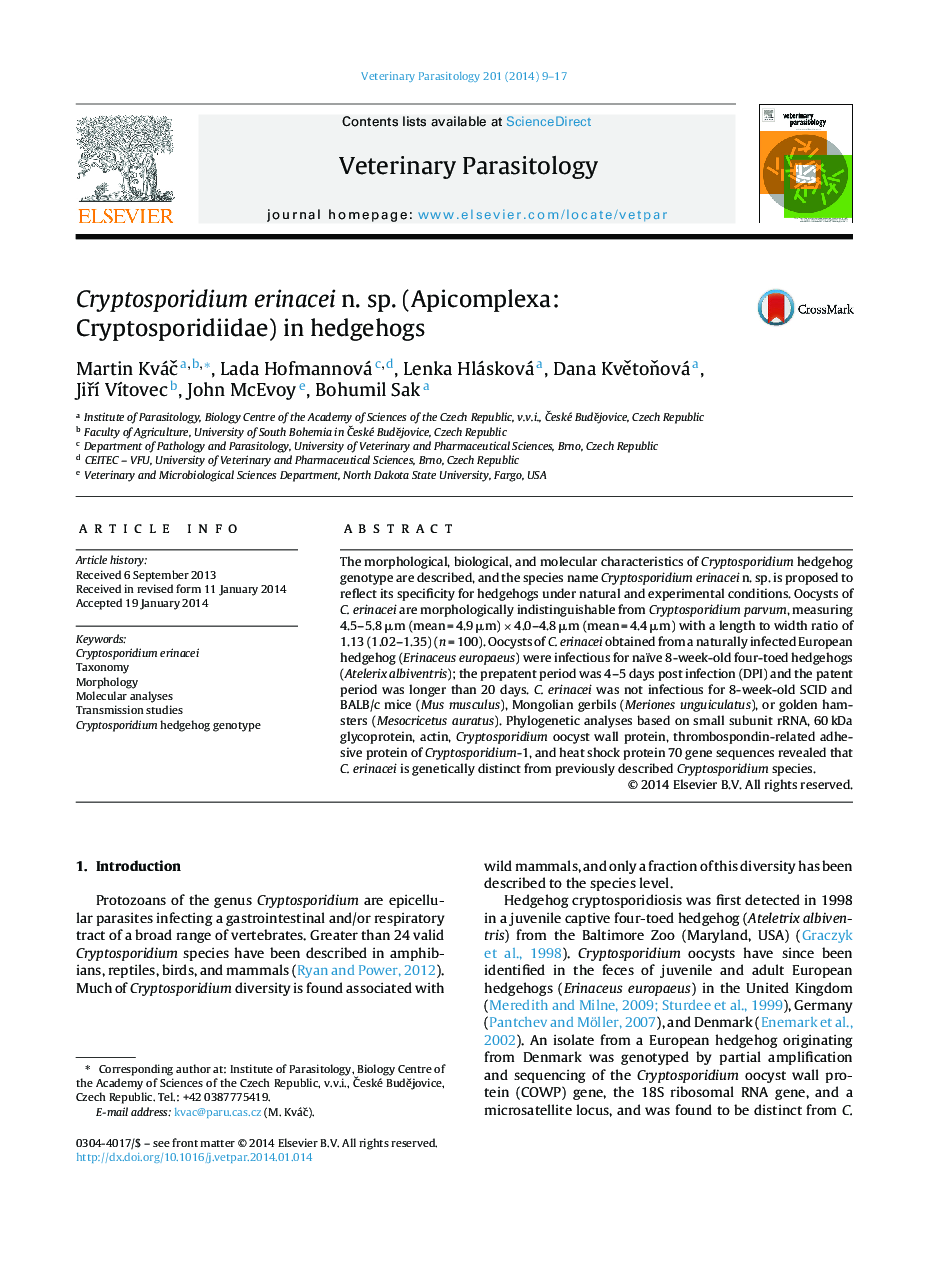| Article ID | Journal | Published Year | Pages | File Type |
|---|---|---|---|---|
| 5803285 | Veterinary Parasitology | 2014 | 9 Pages |
The morphological, biological, and molecular characteristics of Cryptosporidium hedgehog genotype are described, and the species name Cryptosporidium erinacei n. sp. is proposed to reflect its specificity for hedgehogs under natural and experimental conditions. Oocysts of C. erinacei are morphologically indistinguishable from Cryptosporidium parvum, measuring 4.5-5.8 μm (mean = 4.9 μm) Ã 4.0-4.8 μm (mean = 4.4 μm) with a length to width ratio of 1.13 (1.02-1.35) (n = 100). Oocysts of C. erinacei obtained from a naturally infected European hedgehog (Erinaceus europaeus) were infectious for naïve 8-week-old four-toed hedgehogs (Atelerix albiventris); the prepatent period was 4-5 days post infection (DPI) and the patent period was longer than 20 days. C. erinacei was not infectious for 8-week-old SCID and BALB/c mice (Mus musculus), Mongolian gerbils (Meriones unguiculatus), or golden hamsters (Mesocricetus auratus). Phylogenetic analyses based on small subunit rRNA, 60 kDa glycoprotein, actin, Cryptosporidium oocyst wall protein, thrombospondin-related adhesive protein of Cryptosporidium-1, and heat shock protein 70 gene sequences revealed that C. erinacei is genetically distinct from previously described Cryptosporidium species.
